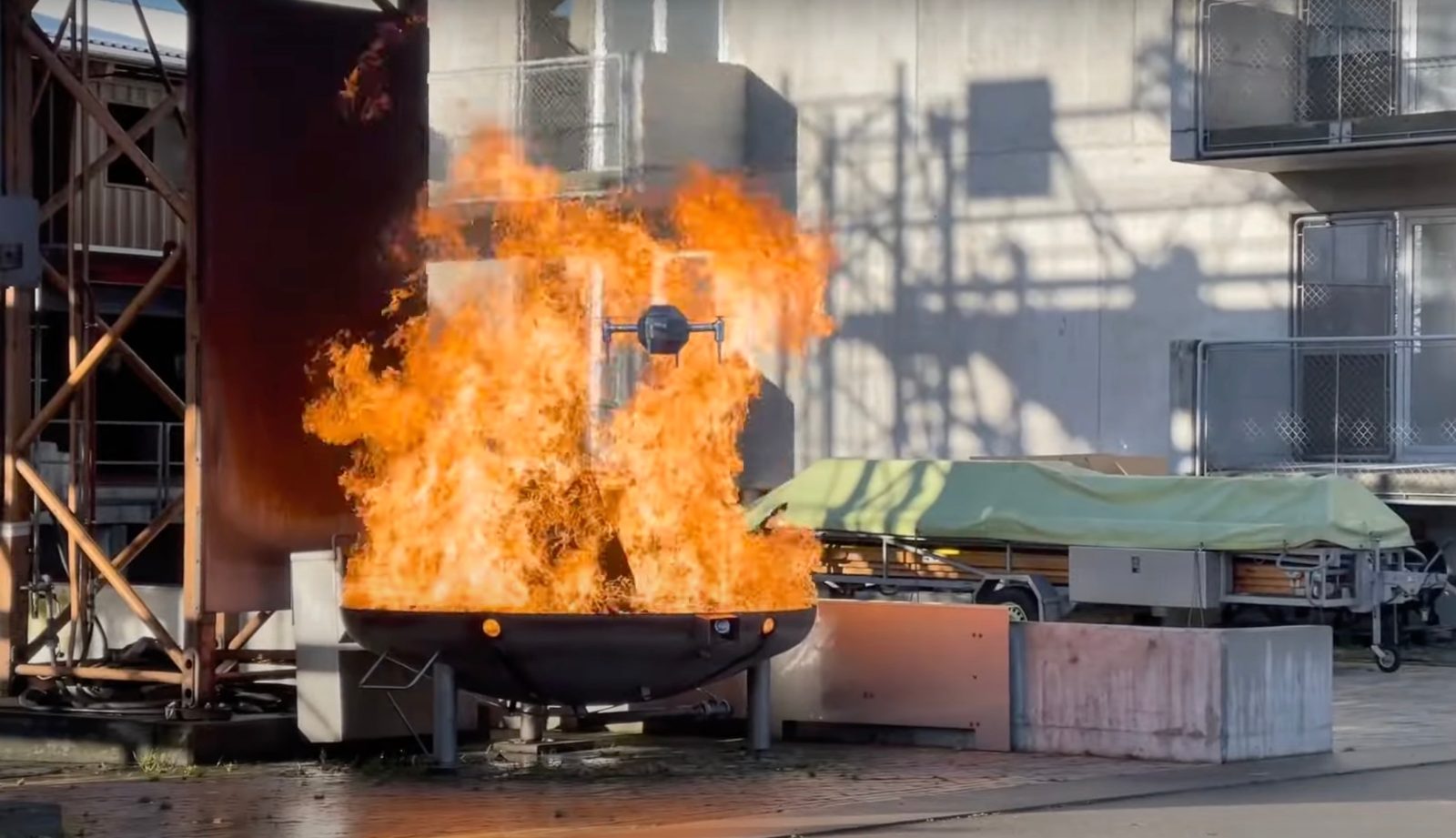
Researchers at the UK’s Imperial College London have created a prototype drone specially designed to withstand intense heat, and which through continued development may be produced as a vital data gathering tool for firefighters to minimize risk factors in various blaze-battling scenarios.
The less than fancifully named FireDrone project aims to assist firefighters in a variety of situations they currently must enter with limited or no advance information about threats to themselves or potential victims trapped by flames. The UAV has been constructed using highly heat-resistant materials, permitting it to fly into blazes and gather a range of visual and environmental data for use by first responders preparing emergency intervention.
Initial testing of the craft has demonstrated its capabilities to continue functioning amid 200°C heat for 10 minutes.
Led by Professor Mirko Kovac, researchers at Imperial College London’s Aerial Robotics Lab and the Swiss National Laboratory for Material Science and Technology, Empa, are developing FireDrone to enter burning buildings or tightly cloistered outdoor environments like forests aflame on data collection missions.
To enable that, onboard assets like cameras, carbon dioxide sensors, and other tech capable of gathering various kinds of environmental information are packed inside lightweight, highly insulating materials like polyimide aerogel and glass fibers.
Read: Pyromaniac UAV? Australia tests backfire-lighting drones to battle wildfires
That outer shell is further coated with super-reflecting aluminum that protects FireDrone’s internal components from the intense heat as it feeds information to first responders planning intervention.
In addition to identifying the presence and position of potential victims who may be trapped by flames, Imperial College London’s Kovac says FireDrone can reveal heat structures and burn paths, and provide firefighters a far clearer idea of what they’ll face – and how that situation is likely to evolve.
“Until they enter the danger zone, firefighters can’t be certain of what or who they’ll find, and what challenges they’ll encounter,” says Kovac, whose posts at both Imperial College London and Empa brought researchers at both organizations together in the project. “FireDrone could be sent in ahead to gather crucial information – noting trapped people, building layouts, unexpected hazards – so that responders can prepare accordingly to keep themselves safe and potentially save more lives.”
Project members will continue work to increase the degree and time FireDrone can withstand heat without failing, and use miniaturization to add other kinds of sensors to its mix.
Given its resistance to heat, meanwhile, FireDrone researchers have also begun testing it in a Swiss glacier tunnel to see if the UAV may also be of use in emergency deployment in extremely cold situations.
.
FTC: We use income earning auto affiliate links. More.




Comments